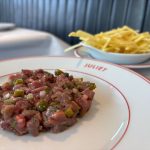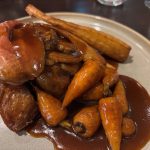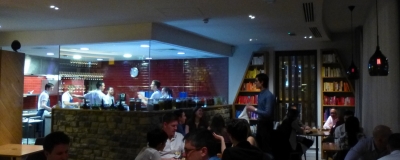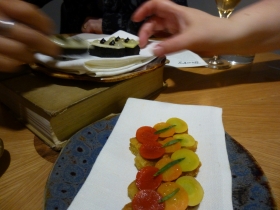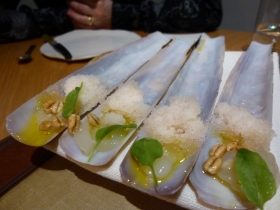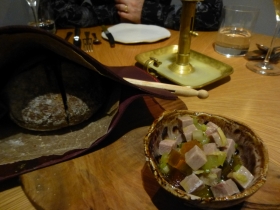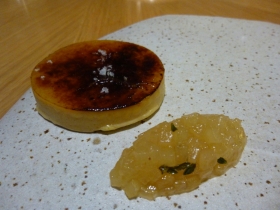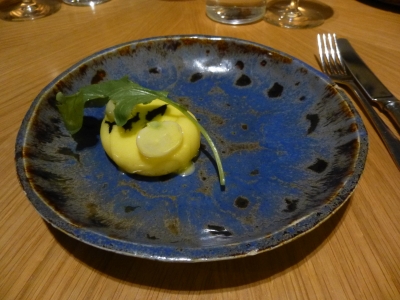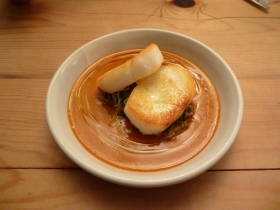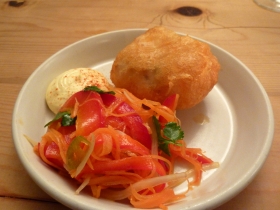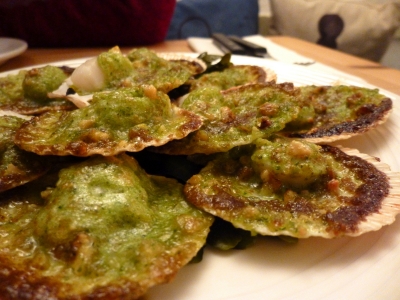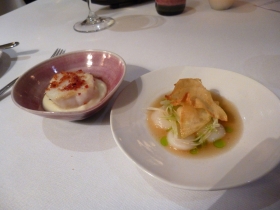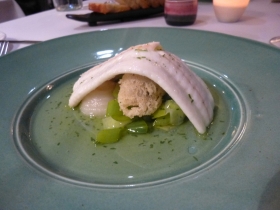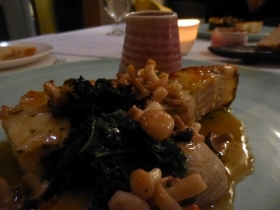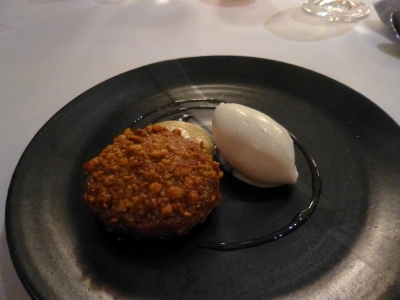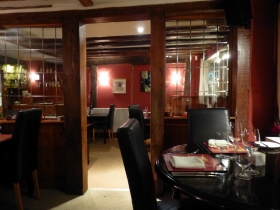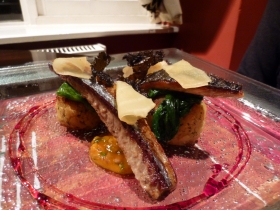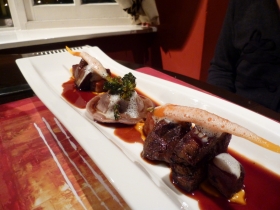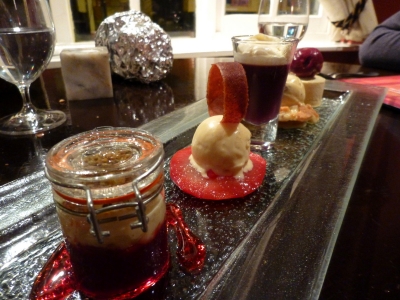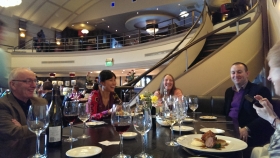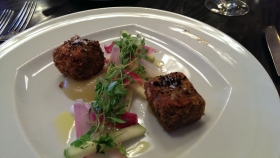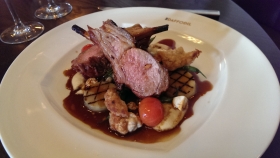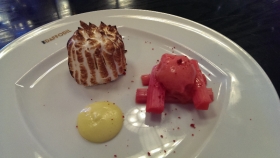Customer: “That was a really good tasting menu. X and Y were particularly brilliant. I must admit though, we all thought the four desserts were a bit repetitive, all basically ice cream. One dish with a pastry element or a bit of cake might have been good…”
Waiter: “To be honest sir, you’d never get anything like pastry or cake on a menu like this. I’ve never seen it in all the restaurants I’ve worked in…”
Customer: “Oh, silly me, we must be simple country folk who never eat out and haven’t enjoyed cake and pastry elements in tasting menus right across the UK and around the world. D’oh, I’ll just shut up now shall I?”
Okay, I didn’t say the last part, because after all we had just enjoyed a very good meal, but I certainly thought it. It really doesn’t do a waiter any good to tell the customers that their feedback is basically crap and unwanted, even if that’s how he feels. It certainly was a bum epilogue to what had been rather a good Story up until that point. D’you see what I did there?
Story sits on its own in a smart little wood and glass building at the Tower Bridge end of Tooley Street. The interior is darkly modern with some fun gothic elements in the wall art, the raven perched overhead and the collection of books across the room. It’s good, ‘cos I love books. There’s some vague idea of the menu as a narrative, but really it’s just food that makes you come over all Dickensian. What else could you do, faced with a dish of “potato, turnip and coal”?
This is a proper ol’ many-course tasting menu full of invention and intention. Seven canapes showed up in quick succession, including a delicious bite of some of the nicest black pudding with not-quite-enough apple puree on top, rabbit fingers (like fish fingers, but rabbit and topped with spiffy bergamot-pickled carrot and tarragon cream), startling faux-Oreos (squid ink biscuits sandwiching a smoked eel puree) and many more.
Next I got to be smug, because I had spotted that the candle on our table was burning faster than it ought to, and sure enough the “wax” puddling in the candle holder was actually beef dripping. The bread was good and grainy, and with a vinegary tongue and jelly relish to balance the dripping this was perhaps my favourite bread course ever. ‘Cos it was fun, as well as tasty.
We then sailed through some magical starters, including a disc of foie gras with a brilliant bitter brulee topping and a bright pear relish, slivers of scallop and the aforementioned dish of potato, turnip and coal. This turned out to be some very cheesy mashed potato with rich butter hiding a puddle of coal oil (alas, more drama than taste) and gifted with two tiny turnips. I love tiny turnips. Neat dish.
The main course was a toothsome piece of beef with a bitter watercress puree and groovy whole grains, the whole dish very salty; only forgivable because on a menu like this the main course is half-a-dozen bites anyway and the salt cut through the bitter cress.
So to the puddings. The “palate cleanser” has taught me what rapeseed oil ice cream tastes like; it tastes like licking a barnyard. Don’t get me wrong, I loved every novel and challenging taste this evening (and the jerusalem artichoke ice cream was yet to come!), I’m just reporting for your interest that rapeseed oil ice cream is one taste I won’t be seeking out again. The next dish, of dill sorbet and almond ice cream, was absolutely smashing. Then there was a milk ice cream with textures of milk. Then the jerusalem artichoke ice cream with pear, another new dessert experience for me that I’m glad I’ve had but won’t be scanning menus for in future. And you see my point about the repetitive desserts?
Where did we get to? I enjoyed the heck out of Story, the chef here is clearly loving the challenge of both pulling together a menu with a real sense of theme and focus, but also making sure that he innovates and experiments at the same time, and I’m more than happy to go along for the ride. It’s a bumpy ride over one or two dishes, but then I said exactly the same about Noma; y’know, best restaurant in the world two years running Noma. Innovation is tough. The ten course menu is £80 and I think that’s about right for the effort and technique on display. There’s no a la carte; it’s 6 or 10 course tasting. The wine list is on the steep side; we had to roam into the £50 range to pick bottles we actually fancied. If you like food you can talk about, give it a go.


